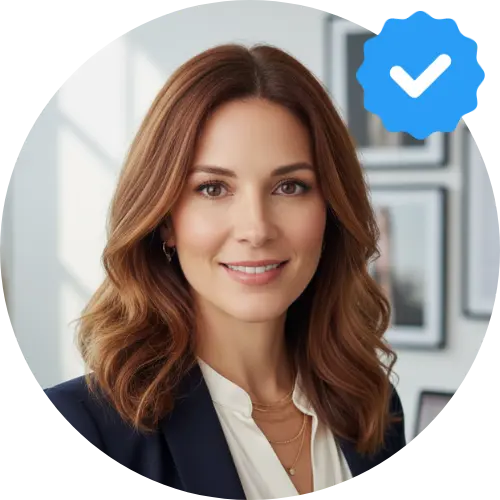So you're thinking about diving into the world of intimate wellness design? 🎨 Honestly, it's one of the most rewarding creative fields you probably haven't considered yet. I mean, we're talking about designing products that literally improve people's most personal moments - how amazing is that?
Here's the thing though - breaking into this industry isn't like designing your typical consumer products. There's a whole different set of skills, sensitivities, and industry knowledge you'll need. But don't worry, I've got your back with everything you need to know to get started.
Understanding the Intimate Wellness Design Landscape
Let's be real - the intimate wellness industry has exploded in recent years. We're talking about a market that's expected to reach $52.7 billion by 2026, according to recent market research. That's not just sex toys (though they're definitely part of it). We're looking at everything from period products to fertility trackers, couples' communication apps to sexual health education platforms.
What makes this field so unique? You're designing for experiences that are deeply personal, often stigmatized, and incredibly diverse. Your users might be exploring their sexuality for the first time, dealing with medical conditions, or trying to reconnect with their partner after years together.
The best designers in this space understand that they're not just creating products - they're creating safe spaces, breaking down barriers, and honestly? Changing lives.
Essential Skills Every Intimate Wellness Designer Needs
User Research and Empathy
This is where everything starts. You can't design effective intimate products without truly understanding your users' needs, fears, and desires. But here's where it gets tricky - people aren't always comfortable talking about their intimate experiences.
I've learned that successful research in this field requires building incredible trust with your participants. You need to create environments where people feel safe sharing deeply personal information. This might mean conducting interviews in comfortable, private settings, using anonymous surveys, or working with sex educators and therapists who can provide insights.
Some techniques that work particularly well include diary studies (where users document their experiences over time), co-design sessions with diverse communities, and partnering with sexual health professionals who can provide clinical perspectives.
Inclusive Design Principles
Tbh, if you're not designing inclusively in this space, you're doing it wrong. The intimate wellness industry has historically excluded so many people - different body types, abilities, gender identities, sexual orientations, and cultural backgrounds.
Your design toolkit needs to include understanding of different anatomies, mobility considerations, cultural sensitivities, and accessibility requirements. For example, designing a product that only works for one body type isn't just bad design - it's actively harmful.
I always recommend studying the work of organizations like the Pleasure Advocacy Network and following designers who prioritize inclusion, like those working on adaptive intimate products for people with disabilities.
Material Science and Safety
This isn't optional - it's literally about people's health and safety. You need to understand body-safe materials, manufacturing processes, and regulatory requirements. We're talking medical-grade silicones, understanding phthalates and why they're problematic, and knowing the difference between various plastics and their safety profiles.
The FDA has specific guidelines for intimate products, and different countries have different regulations. You'll want to familiarize yourself with these early in your career, not as an afterthought.
Technical Skills That'll Set You Apart
Design Software Mastery
Your basic toolkit should include industry standards like Sketch, Figma, or Adobe Creative Suite for digital products. For physical products, you'll want to get comfortable with CAD software like Fusion 360 or SolidWorks.
But here's what many beginners miss - you also need to understand prototyping tools. Whether that's 3D printing for physical products, InVision for app prototypes, or even basic Arduino skills for connected devices.
Understanding Technology Integration
The modern intimate wellness space is increasingly connected. Products sync with apps, use biometric sensors, or incorporate AI for personalized experiences. You don't need to be a programmer, but understanding the possibilities and limitations of different technologies will make you a much stronger designer.
I've seen too many beautiful designs fail because the designer didn't understand the technical constraints or possibilities. Spend time learning about Bluetooth connectivity, sensor integration, and data privacy - especially data privacy, because you're dealing with incredibly sensitive user information.
Building Your Industry Knowledge
Sexual Health and Education
You can't design effective intimate products without understanding sexual health, anatomy, and psychology. This doesn't mean you need a medical degree, but you should have a solid foundation in sexual wellness principles.
Start with reputable sources like the American Sexual Health Association, Planned Parenthood's educational resources, and books by sex educators like Emily Nagoski or Eli Coleman. Understanding concepts like sexual response cycles, common sexual health issues, and the psychology of intimacy will inform every design decision you make.
Market Analysis and Competitive Research
The intimate wellness market is complex and rapidly evolving. You need to understand not just what products exist, but why they succeed or fail, what gaps exist in the market, and how different demographics are served (or underserved).
Companies like Dame, Maude, and Lora DiCarlo have revolutionized different aspects of the industry. Study their design approaches, marketing strategies, and user feedback. But also look at what they're missing - where are the opportunities for innovation?
Professional Development and Networking
Finding Your Community
The intimate wellness design community is smaller but incredibly supportive. Organizations like the Pleasure Product Association provide industry insights and networking opportunities. Social media groups and forums dedicated to sexual wellness often welcome designers who approach the space respectfully and professionally.
Don't overlook academic conferences either. Events focused on human sexuality, public health, or inclusive design often feature sessions relevant to intimate wellness design.
Building a Portfolio
Here's where things get interesting - how do you showcase intimate wellness design work? You need to be thoughtful about what you show and how you present it, considering platform guidelines and professional contexts.
Focus on your design process, user research insights, and problem-solving approach rather than explicit product imagery. Case studies that demonstrate your understanding of user needs, safety considerations, and inclusive design principles will be much more valuable than pretty pictures.
Ethical Considerations and Responsibilities
Working in intimate wellness design comes with unique ethical responsibilities. You're dealing with people's most vulnerable moments, personal data that could be incredibly damaging if mishandled, and products that can directly impact physical and emotional wellbeing.
This means understanding consent in design - not just legal consent, but ongoing, informed consent. It means designing with privacy by default, not as an add-on. And it means constantly questioning whether your design decisions might inadvertently harm or exclude certain users.
Research by Dr. Shoshana Zuboff on surveillance capitalism is particularly relevant here - intimate products collect incredibly sensitive data, and you have a responsibility to ensure that data is protected and used ethically.
Getting Started: Your First Steps
Ready to dive in? Start with education and observation. Take courses in human sexuality, read extensively about sexual health and wellness, and begin following industry leaders and organizations.
Consider volunteering with sexual health organizations or LGBTQ+ advocacy groups. This will give you exposure to real user needs and help you build empathy and understanding.
If you're currently in school or working in another design field, look for opportunities to apply intimate wellness principles to your current work. How can you make your designs more inclusive? How can you better protect user privacy? These skills transfer directly.
Frequently Asked Questions
Do I need a background in healthcare to design intimate wellness products?
Not necessarily, but you do need to educate yourself about sexual health and anatomy. Many successful designers in this space come from traditional product design, UX design, or industrial design backgrounds but have invested time in learning about sexual wellness.
How do I conduct user research for such personal products?
Building trust is key. Work with sexual health professionals, use anonymous research methods when appropriate, and always prioritize participant comfort and consent. Consider partnering with existing organizations that already have relationships with relevant communities.
What are the biggest challenges in intimate wellness design?
Platform restrictions for marketing, regulatory compliance, cultural sensitivities, and the need for extremely high safety standards. Also, user research can be more complex because of the personal nature of the products.
Is this field only for certain types of designers?
Absolutely not! The field needs diverse perspectives, backgrounds, and experiences. What matters most is approaching the work with respect, empathy, and a commitment to improving people's intimate experiences.
How do I handle family or professional reactions to working in this field?
Focus on the health and wellness aspects of your work. You're designing products that improve people's quality of life, relationships, and health outcomes. That's something to be proud of, regardless of others' comfort levels.
Resources to Get You Started
Books: "Come As You Are" by Emily Nagoski, "The Technology of Orgasm" by Rachel Maines, and "Pleasure Activism" by Adrienne Maree Brown provide excellent foundations in sexual wellness and social justice perspectives.
Organizations: The World Health Organization's sexual health resources, the Guttmacher Institute for research and policy, and the Center for Sexual Pleasure and Health for educational content.
Design inspiration: Follow companies like Dame Products, Maude, Lora DiCarlo, and Unbound for examples of thoughtful, inclusive design in the intimate wellness space.
Final Thoughts
Ngl, breaking into intimate wellness design isn't always easy - there are unique challenges, sensitivities, and responsibilities that come with the territory. But if you're passionate about creating products that genuinely improve people's lives and relationships, this field offers incredible opportunities for meaningful impact. 💖
The industry desperately needs more thoughtful, inclusive designers who understand that intimate wellness isn't just about products - it's about dignity, pleasure, health, and human connection. Your fresh perspective and commitment to ethical design could be exactly what the field needs.
Remember, every expert started as a beginner. The key is approaching this work with genuine respect for your users, commitment to continuous learning, and understanding that you're not just designing products - you're helping create a world where everyone's intimate wellness matters.
So... ready to start designing for pleasure, health, and human connection? The intimate wellness industry is waiting for designers like you. 🌟




